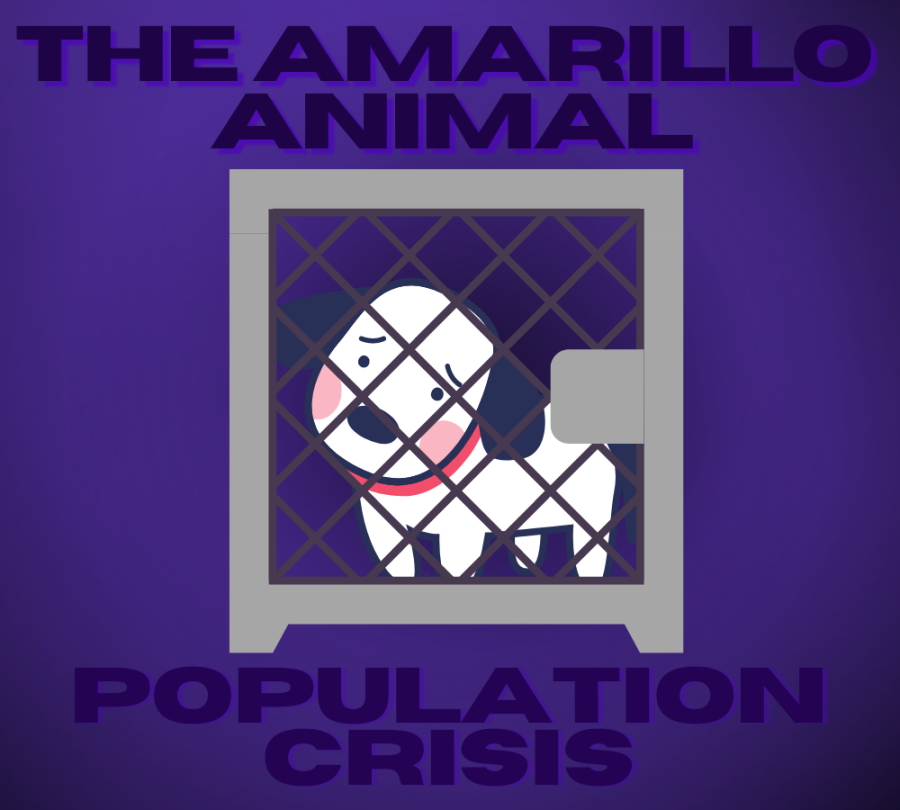In the United States alone, approximately 1.5 million cats and dogs receive euthanization each year. Out of 70 million living on the streets, only 6.5 million make it into shelters. From then on, hope for their lives begins to diminish with every tick of the clock. In short, there are more pets than there are responsible homes for them. With an endless stream of abandoned pets, without a strong commitment to population control through the administration of strong laws, this problem will only continue to persist.
The implementation of new and strongly enforced spaying and neutering laws must begin by calling on our elected officials and holding irresponsible pet owners and breeders for their actions.
“The biggest problem we were seeing with euthanasia is the overcrowding, overcrowding, overcrowding.” Animal Management & Welfare of Amarillo officer Clay Martin said
As a matter of fact, the state of Texas, a leader in euthanasia usage around the country, does not see stops of decline. The growth of irresponsible owners failing to see their pets to vaccinations and spaying-neutering procedures has caused small cities, such as Amarillo, to see euthanization numbers comparable to those of much larger cities. Based on the September 2022 City of Amarillo published statistics, the live release rate from the shelter showed only 57-59% get a chance at a new home. That means that out of 100 dogs arriving at the pound, 41 face a future dead, at the city’s dump. Moreover, high population levels within shelters see the development of illness, aggression, and stress created within the animals, leaving many of them, especially bully breeds, with a wrongfully placed “aggressive” label.
Animal overpopulation has begun to turn into a full-blown economic issue, and communities alone do not have enough resources to take care of all the animals. According to the Vital Life Pet website, the impoundment, sheltering, euthanasia and disposal of homeless animals cause U.S. taxpayers to factor out between “one to two billion dollars annually.” To lessen strains, the Animal Management & Welfare of Amarillo recently updated its euthanasia policy. Many communities have not only begun to see the daily euthanization of animals go up but also the pressure on public resources to care for and find homes for these animals. The capacity of shelters and rescues has hit an all-time high. Irresponsible breeding and animal abandonment create stray animals, and the fact is: we all pay for pet overpopulation.
Spayed and neutered pets have fewer behavioral issues and are also less susceptible to infections and degenerative diseases. According to a life span study conducted by the University of Alabama, results suggest that the outcomes of spaying and neutering have little effect on lifespan. By neutering male pets, the risk of the animal contracting testicular cancer and prostate cancer may notably reduce. For females, spaying can significantly reduce and even eliminate the chance of ovarian, uterine, and mammary cancer and infections. Not only this, but experts say that roaming urges reduce by almost 90% in males, and overall aggression between dogs has decreased by about 60% as well.
Those who disagree with this position often refer to this medical procedure as abnormal in animals. However, although silly to reiterate, animals are not people and should not be treated as such. In the words of Justine Hankins in a Guardian news article, “There is a tendency to project our own maternal and sexual needs onto our pets – it is not unusual, say, for female animals to be allowed one litter so that they can experience ‘being a mum’, while men are prone to an attack of castration anxiety at the very idea of the vet’s scalpel.” Animals do not have any concept of sexual identity, and “fixing” an animal will not cause them to suffer any crisis of such. Secondly, many carry the belief that this procedure bares too great of a financial burden to undergo. However, on the contrary, shelters, and vets will offer incentives and many resources including reduced or even free spay-neuter options. For example, many organizations in the Panhandle, such as the Amarillo SPCA, Panhandle Low-Cost Spay/Neuter Project, Inc, and the P.E.T.S Clinic work diligently to assist in reducing any financial hardships that may arise. Not to mention, when adopting from the city pound or shelters, the fees tend to decrease significantly.
If the community of Amarillo does not fight for change, we will continue to hear about the half-dead puppy dropped off at the shelter, the dumped dog on a busy highway or the end of another life because no empty space remains. We will continue to hear about the desperate need for donations and stories of dwindling resources. We can choose adoption, and we can choose the responsible route of neutering and spaying our companions to ensure they will not play a role in the influx of homeless animals. We can choose to donate time, toys and treats because a little tail wag means hope for my city and its furry companions.
Local Organizations to Support/Adopt from:
– Amarillo SPCA
– Panhandle Paws of Hope
– Gracie’s Project
– Forgotten Dog League of Amarillo Inc
– Lost Pets of Amarillo
And so much more!


